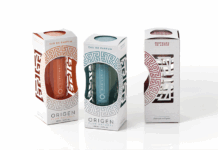
By Steve Brownett-Gale, marketing lead at Origin
Nearly 70% of the United Kingdom has received prescriptions for one or more medications, and according to the WHO, anyone who lives long enough will experience at least one eye disease or disorder in their lifetime. Considering this, inclusive pharmaceutical packaging is paramount.
This World Braille Day, I discuss the importance of accessibility in pharmaceutical packaging and how the industry supports the visually impaired while exploring innovations in pharmaceutical packaging.
Understanding accessibility in pharmaceutical packaging
In the UK, over two million people live with sight loss and 340,000 are registered as blind or partially sighted. Furthermore, the UK population is aging. It is predicted in the next 25 years the number of people over the age of 85 will double to 2.6 million. It is well documented that aging affects eyesight, and the elderly are more likely to struggle to see up close, have trouble distinguishing between colours and take longer to adjust to changes in light levels.
Accessibility in packaging means embracing a design approach that caters to every patient’s varied needs and capabilities. Its main goal is to create pharmaceutical packaging that is universally intuitive, easy to handle and user-friendly, irrespective of the type of disability.
With studies confirming that the visually impaired or blind are more at risk of medication errors, it is of absolute importance accessibility is an integral part of all pharmaceutical packaging design. Accessible pharma packaging aims to empower and safeguard all patients with disabilities, including sight loss, giving them integrity and independence in managing their own health.
But how does pharmaceutical packaging do this?
How pharmaceutical packaging supports the visually impaired
Inclusivity in the physical design of pharmaceutical packaging must incorporate simplicity and ease of use, whilst never compromising child safety. For example, blister packs, with individual pill compartments, make dosage management for the visually impaired much simpler than a bottle of pills would.
Accessibility features that ensure equal access to vital medical information have also become more mainstream among medicinal packaging design. Braille, for example, is an effective way for visually impaired or blind people, empowering them to ‘read’ using their sense of touch. In the UK, all medicine packing must display the name of the medicine in braille on either the front or back of the packaging.
But why stop there? Innovation in pharmaceuticals is making new ground for the industry and further integrating accessibility into design.
Innovations aiding the visually impaired
In an ever more digital world, research and development are continuing to create innovative and intelligent packaging solutions to further improve the inclusivity of medicine around the world and remedy existing limitations to current practices.
These innovations prioritise patient safety, ensuring medicine integrity, correct dosage administration and preventing patients from falling foul of fake pharmaceuticals. All of which affect the visually impaired and blind disproportionately.
For example, sensor technology can alert visually impaired patients to the ‘freshness’ of their medicines, thereby removing their reliance on being able to read medicine ‘use-by’ dates.
Smart QR codes incorporated into pharmaceutical packaging mean readily available auditory versions of medicine information can be easily accessed with a smartphone.
Developments in Near Field Communication (NFC) technology in pharmaceutical packaging have empowered patients with the ability to not only receive audible versions of dosage instructions but also to protect themselves from fake pharmaceuticals. Patients can use smartphones to scan medicines and check their legitimacy and validity.
The future of accessible pharmaceutical packaging is bright. In fact, the Intelligent pharmaceutical packaging industry is growing rapidly with a predicted compound annual growth rate (CAGR) of 9% between 2020 and 2025.
There is hope yet that this will be filtered into improving the experiences of blind or visually impaired patients across the globe too.












